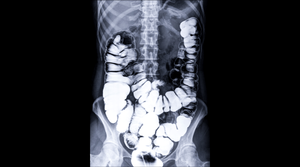Microfluidic CD System Performs Medical Diagnostics
March 8, 2013
Microfluidic CD system developed at the University of California, Irvine can be used to perform medical diagnostic applications. |
Traditionally, doctors have had to rely on outside labs to process and record the results from patient diagnostic samples. Laborious and time-consuming, this age-old ritual has spurred the development of microfluidic lab-on-a chip technologies that could eventually enable doctors to perform onsite diagnostics. Going a step further, a team of researchers at the University of California, Irvine has reverted to the use of compact discs (CD) in the hopes that this ripe technology--refashioned to function as a microfluidic device--will eventually enable doctors to run medical tests by simply popping a disc into an ordinary CD player.
"Our CD technology takes advantage of the same rotating platform that is used to play music and movies," comments Marc Madou, Chancellor's Professor of mechanical and aerospace engineering and biomedical engineering at UC Irvine. "However, many people have perhaps not recognized that in this very inexpensive CD player, there is a sophisticated optical platform that can do three things for us at a very inexpensive cost."
First, the CD is a microscope, which can easily be turned into a device for visualizing objects as small as cells. Second, because the CD spins, it can function as a centrifuge. Third, CDs are inexpensive plastic disposables that can be used instead of glass slides, microtubes, or polymerase chain reaction (PCR) tubes. The lateral, flat chambers that the researchers carve into the surface of the CD can contain a liquid, just like a PCR sample in a little tube.
In addition to the CD's three primary characteristics, the technology can also act as a pump, Madou explains. "In almost all medical diagnostic applications, you need a pump. In addition, the pump requires tubing. In our case, we don't need tubes because the rotating CD, performing as a pump, contains leads in the plastic disk." This feature promotes miniaturization because the disposable CD can serve as a small pump. And because the CD is symmetrical, it can easily be multiplexed. "If you think of the CD as a pie, we can divide it into many small segments," Madou adds. "Depending on the size of the segments, the rim of a single CD can be used to perform 1056 immunoassays."
A subfield of microfluidics, CD microfluidics concentrates on the behavior, control, and manipulation of fluids in the microdomain. In this technology, fluidic channels and reservoirs are embedded in a CD-like plastic substrate that is spun using a motor. Exploiting centrifugal forces to achieve fluid propulsion, the system can perform a range of fluidic functions, including valving, decanting, calibration, mixing, metering, sample splitting, and separation. These functions are then combined with such analytical measurement techniques as optical imaging, absorbance, fluorescence spectroscopy, and mass spectrometry, enabling the CD platform to perform a host of medical and clinical diagnostics.
"When the microfluidics arena started, it was unfortunately quite heavily geared toward high-throughput screening for such applications as drugs," Madou says. "This trend misdirected the whole microfluidics field a bit because diagnostic applications are very different from high-throughput screening." For diagnostics--and that's mostly what the UC Irvine researchers do with CDs--the equation is to achieve as little complexity as possible on the CD and shift as much cost and complexity as possible to the instrument.
For Madou and his team, measuring blood gases and blood electrolytes was one of the easiest entry points into the CD diagnostics game. Their next step will be to develop DNA and nucleic acid analysis capability, applications that are in progress but not yet marketable. They also have several successful stations that can effectively lyse and purify DNA. "Thus, ours is a very generic platform because it is a smart centrifuge, an inexpensive disposable, and an optical system with very accurate positioning capability," Madou notes. "It would be hard to develop such a technology from scratch. It has the backing of a huge CD industry behind it, and that enables us to work with these components at a low cost."
About the Author(s)
You May Also Like


